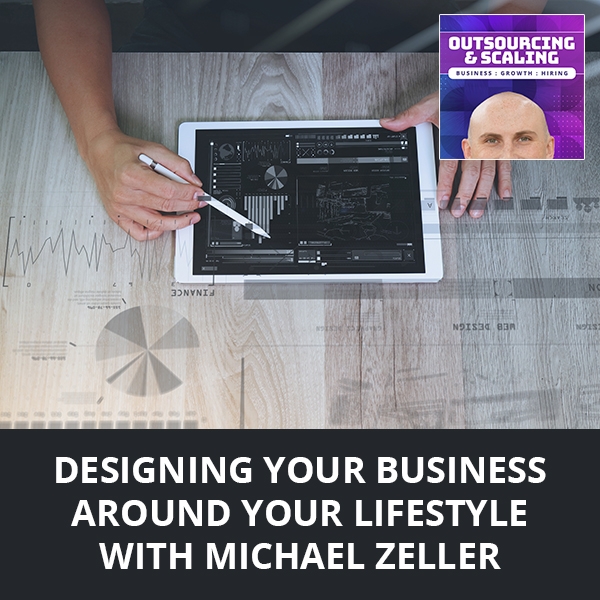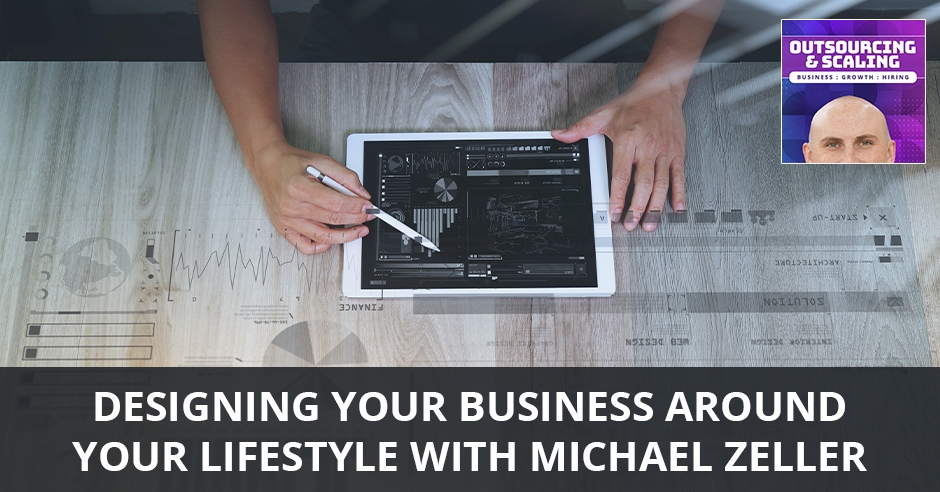


—
Listen to the podcast here:
[smart_track_player url=”https://www.podetize.com/statsapi/www.podetize.com/wp-content/uploads/fileuploads/11-5b145ef137b51b3d1af0633e9305c43d/07/2019/d281750729667119c04bac4c771345d0.mp3″ title=”Designing Your Business Around Your Lifestyle with Michael Zeller” artist=”Nathan Hirsch” image=”https://freeup.net/wp-content/uploads/2019/04/OAS.png” ]
Download the audio file here.
Designing Your Business Around Your Lifestyle with Michael Zeller
I have a very special guest, Mike Zeller. Mike, how are you doing?
I’m doing great. It’s always great to connect with other talented entrepreneurs like you. That’s my tribe and when you get to connect with brilliant, talented, motivated and ambitious people, it energizes me every day. I can’t complain at all.
You and I met after a ClickFunnels event at dinner and we spent all dinner talking about scaling businesses. When I launched the podcast, I thought, “I’ve got to reach out to Mike. I want to pick his brain and share it with my audience.” Before we dive into that, Mike is the Founder of Wonder House, a CMO of LifeGuides and the Founder of Rising Stars Mastermind. He’s a business architect and he helps entrepreneurs and thought leaders win at business and life and designing their business around the life they want to live. We’re going to talk all about that but first I want to take a step back. Before founding the companies, before being an entrepreneur, what were you like growing up? Did you always know you wanted to be an entrepreneur? Were you a rebel or were you a straight–A student?
I was super ambitious and motivated like a baseball player. I was hustling, studying baseball and playing it as much as I could. I was an A and B student in high school and college. I saw myself climbing the corporate ladder. I remember I was like, “By the time I’m 30, I’m going to have a BMW and I’m going to be an executive.” By the time I was 30, I was fully self–employed and on my own. I did have an Audi, but I didn’t have a BMW at that point. I didn’t necessarily think I would be an entrepreneur but as I journeyed down, I realized, “This job thing was not for me. I was meant to create, to lead and to chart my own path.”
When did you first get that entrepreneurial itch?
Full delegation is out of sight, out of mind.
I first started feeling it in my mid–twenties. I was working in a mortgage company and investing in real estate. I was like, “There’s something here,” and then I started selling real estate. That was the first time I was truly self–employed and I crushed it. I doubled my income and more than double, almost tripled my income my first year being fully self–employed. I was like, “Why have a ceiling over me and why have someone else dictating when I work and how I work?” As time went on, I was at the top of my field in the real estate game within a year or two. I was like, “If this game is this easy, I’m meant for something more.” By my third year, I was like, “If I stay in this game, I feel like my soul is going to die. I was meant for a lot more than that.” I started making a shift and I went to Buenos Aires, Argentina for a six–week mini–sabbatical and unplugged from work. I hadn’t had my business taken care of while I was there. In the end, I realized my last week there I was sitting in a cafe and this epiphany hit me. It was like, “Mike, if you’re the engineer of your businesses, you’re going to get tired but if you design the engine, you could do amazing things.” I came back, I was like, “How do I design a business where I’m not the engine?” I launched three more businesses that next year.
Talk a little bit about doing that because a lot of entrepreneurs, they get involved in the hustle, the day–to–day operations of the business. I’m guilty of that sometimes as well. How do you start that mindset where you’re creating something, your business is your baby but you’re taking a step back and you’re looking it from the outside rather than staying on the inside Monday through Friday or seven days a week?
In the beginning, especially if this is your primary or only source of income, most people start in the game of entrepreneurship because they are the business. It’s dependent on them. They’ve got to execute and do all those things. At the three to five–year mark, if someone is aware, alert, engaged and awoke in a way, then they start realizing, “If I stay in this, I’m going to grind myself down to a bloody pulp.” You start thinking, “How do I step back and start designing the business?” Now that I’ve been through twelve different ventures, I started at the beginning that way. I started thinking, “How do I design the business to leverage my genius to create a time and location freedom?” I’m in LA, then I’m in Vancouver and I’m in Europe for several weeks. Most of us start doing the business and we run hard on them, but we don’t spend a whole lot of time designing it. I’m coaching 50 entrepreneurs in five different countries and I’ve noticed that at about a couple of hundred thousand dollars of income is when entrepreneurs start realizing, “I can’t work any harder.” You’re like, “I’ve got to do something different.” A lot of them haven’t taken vacations and their health is suffering.
I’m assuming it has a lot to do with the systems and the people that you put in the business. Is it that and something else that I’m not thinking of?
It’s partly that and it’s partly thinking through the four S‘s: systems, structures, strategy and support. As you think through those four S‘s, you’re designing, “What’s the structure? Who gets the accounting contacts or who’s handling payments? Who’s handling logistics and administrative stuff? Who is handling sales calls or inbound side?” What I’ve found a lot of entrepreneurs, we were doing a lot of $10 an hour activities. Many of us, if we’re lucky, we’re also doing some $100 an hour activities but not that many of us are consistently doing or even aware of what my $1,000 or my $10,000 an hour activities are. With your business, where you’re at, where you’re in the eight–figure, as soon as you approach the eight–figure mark, you’ve got to be designing activities that help turn that nozzle slightly different instead of $10,000 an hour type activity.

You start stepping back, you start removing stuff off your plate and handing it off to other people. They can do it at least 80% as good as you can. Most people violate two things. They violate the situational leadership model, which is the scale of how I get from directing and telling someone what to do to the explaining, coaching and persuading side and then all the way to the supporting and then finally, the delegation. Full delegation is out of sight, out of mind. Most of us go from step one to step four. We skip steps two and three.
Do you have an example of a company that you came in and they were successful? They were making money but he or she was stuck in the day–to–day operation that you changed their mindset and they were able to work on those $10,000 tasks and get other people to do the other stuff?
Two of my clients, Jordan Dugger and Erin Diamond, they’re fitness entrepreneurs. They had a big online fitness brand. It’s her and a couple of freelancers. She’s making roughly a couple of hundred thousand dollars a year type of deal. She hadn’t taken a vacation and she didn’t have moments necessarily, the same for Jordan. We worked on it. There’s a systematic bottleneck here. You need to hire more people and remove yourself or extract yourself from the operations. You’ve got to figure out, “How do I design the business so that it doesn’t fall apart if I step away?” She started working on that and then she found someone to replace her for a lot of those activities. She was able to work on the higher $10,000 an hour type of activities and biggest strategic elements. Now they’ll crash north of seven figures for the first time in a year.
They’ve had record-setting month after record-setting months because they had space to think of, “Who is my 4% client?” That client that can produce the 20/80 rule, top 20% produces 80% results. If that is true, why not apply it again? The top 20% of the top 20%, that’s 4% of your clients. They can produce 64% of revenue. You design everything around them, your sales, your marketing, your messaging and all those things. Most people will never make that level of intentionality and they’ve taken vacations. They bought their dream home and they have more income than ever. They have more impact than ever and they’re having more fun than ever.
You mentioned delegation and hiring people. A lot of people might say, “That sounds easy. Hire someone that can replace me,” but hiring isn’t that easy and this is the Outsourcing and Scaling show. I’m assuming you talk a lot about helping people find the right person and hire. What is your hiring strategy? What do you teach your clients?
If you hire someone for a position, you’ve got to give them not just a responsibility but also the authority to make the decisions.
It’s almost like the player slay model. In the beginning, a lot of us, we need to test out. Our budget is slim and our margins are slim. We were gaining momentum, but we were not sure. I love to encourage people, test out a bunch of different freelancers. For example, I hired for a design project as simple like SlideDeck for presentation for a talk I was giving. I hired three different freelancers to do the same exact thing and they each cost me $100. One of them delivered and two of them did not. Fortunately, I hired three. I’ll go back and hire that same person again but as I grow and scale, maybe I’ll hire one of those freelancers that I said, “What does it take to buy half of your time?” I get a little bit of a discount on that and get half of their time and they’re incredible.
In the freelance world, which is where most of us start, you’ve got to be willing to sort through some people that are not going to follow through or not going to be a great fit. I’m not going to be a great fit. I might give poor instructions and I might be a bad leader and that’s okay. As long as I don’t stay there and then you start figuring out, “The shift has to happen. What does it look like to hire A players?” This is the slay model. When you’re ready to slay, you’re like, “How do I get someone good as cheap as possible?” It’s like, “How do I get someone that is the best and find a way to afford the best?”
A lot of people fall into that trap where it’s cheap and how can I save the most money? You’re missing that whole great group of talent that would take your business next level and do things at a way higher level than you ever would. The average entrepreneur only has their one to five core competencies, whatever it is. What are some of the biggest mistakes that you see people making when they’re scaling? Let’s say from $1 million to $10 million.
They don’t release control. I’ve experienced it on both ends. They give responsibility but they don’t give authority. If you hire someone for a position, you’ve got to give them not just a responsibility, “You’ve got to get this done or this is your whole job,” but they don’t have the authority to make the decisions. The main one is responsibility and authority. Secondly, hiring A players and key leadership. I don’t want to call it seismic impact positions but there are positions within a company that have disproportionate amounts of impact. When you’re hiring and scaling, you’ve got to think, “First, how do I get those A players or attract A players and how much are they going to cost?” It‘s hard to replace yourself if you’re replacing yourself with a bunch of C–plus players. We’ll need A’s and B’s pretty much across the board. You eliminate C’s or you move C’s into different roles. Sometimes people are C’s in one position, but they could be an A in another position. Entrepreneurs are often too shortsighted on that.
Thirdly, they don’t design the systems. As your business has grown, the systems that supported you when you were in your first six months are way different than your systems cranking through the volume. You’ve got to scale up your leadership, you’ve got to scale up your systems, which might mean it’s new software, strategies and support. You’ve got to continue to elevate all four S’s at each level. Not every entrepreneur is capable of doing that or is willing. It’s rare that an entrepreneur grows with the company as the company grows.

I had lunch with a guy. He was one of the first investors in Endora, the music app before it became a $1 billion company. He helped it get to $1 billion-plus company and he was telling me the main reason they chose a major investment in that company is because the CEO grew with each level of the company, which is rare. That’s okay if you need to hire a professional CEO like Google hired Eric Schmidt. When I’m hiring people, I often hire an A player so I can learn from them. I want to hire people that are way smarter than me. That’s part of my education. I’ll pay you $100,000 but I get to acquire your advanced copywriting knowledge or your advanced this or that. Stretching to hire great people can sometimes pay massive dividends.
If you’re a CEO, you have a growing business and maybe you’re not someone that is adapting. Let’s say, work with you and learn how to adapt and try to acquire those skills or say, “That’s not for me. I’m good at growing businesses from $1 million to $2 million and then I need to hire a CEO, sell it or move it to someone else.” How do you make that decision?
If you have enough true personal humility, you ask for feedback and you study the game. I’ve studied Dr. Ichak Adizes. He has Breakthrough to Prime and he’s the world’s leading authority on organizational cycles and lifecycles and what types of leaders are needed at each, what the organizational strategy, system and structure needs to look like. It’s the Adizes Institute. You have to be honest with yourself. If you asked me, I don’t want to lead a company that’s at a bureaucratic stage, that’s not me. I want to be in the early years up until prime, while it’s still got this high entrepreneurial energy. If a company needs to be rebooted and they need new entrepreneurial energy, I could be interested in that. Having real honesty and integrity around and be who you are. That’s why one of the core processes I take people through is a zone of genius process where you get real awareness around, “I am a freaking badass at this but I suck ass over here.” Stay out of the suck ass lane. Too many of us are trying to be a suck ass or trying to play in a suck ass lane and we’re never going to be a badass in a suck ass lane.
Is there something consistent that you think works to get someone from let’s say $5 million to $10 million? I know we’ve talked about a bunch of different things but is there something, across the board, every entrepreneur should be doing this if they want to take their business from $5 million to $10 million?
At each level, it’s a multiplier effect of irresistible offers. You can get to even multiple seven figures with one irresistible offer, one core product but it’s hard to go from $2 million to $5 million with just one core product. Unless there’s a massive market. If I look at my buddies at Ancient Nutrition or otherwise known as DrAxe.com, they went from $2 million to over $200 million this year is what they’ll hit. They got one product and another product then they got another product and each one helped them. They kept on reselling where they’ve been tempted to go off path if they wanted to keep creating products. Their core product that is their profit hub, they would run out of stock and part of what was helping them grow was they had multiple products. For that $5 million to $10 million mark, it’s doubling down on your highest profit maximizers and that’s your clients. That’s a core piece that’s helped Dr. Axe make massive leaps. They’ve got clarity on who their 4%, their raving fan and biggest client, who they are and redesign everything around them. They got closer to them and found out what it is they want and then started designing more products around what they want. Your best customers will keep buying more and more if you serve them even better.
Stretching to hire great people can sometimes pay massive dividends.
I want to know where in the world are you and where are you going next? I know you travel a lot.
I’m in LA, then I’m off to Vancouver for some in-person consults with some companies up there and back to Nashville, then we’re off to Cambridge in London and Barcelona, Copenhagen and Croatia. It’s going to be fun and I can’t wait.
Where can they find out more value and what are you excited about besides the traveling?
I’m launching my own podcast. I haven’t finalized the name yet, but it might be called Best Live Journal or Best Life Podcast. I have a journal coming out called The Best Live Journal. I’m super stoked about my mastermind, the RisingStarsMastermind.com. That’s the website if you guys are interested in that. I love creating. I love the new opportunities that are incredibly, potentially lucrative and a lot of fun with amazing people that I have in terms of clients, the masterminds and some business partnerships as well that are emerging. I’m super stoked for another year of marriage as well and about to celebrate our anniversary.
If you want to scale your business, if you want to have a better life–business balance and create a good architect for your business, check out Mike. Mike, thanks so much for coming on.
It’s my pleasure. Thanks for having me on, Nathan.
Important Links:
- LifeGuides
- Rising Stars Mastermind
- Breakthrough to Prime
- DrAxe.com
- RisingStarsMastermind.com
About Mike Zeller

- Founder of Wonder House
- CMO LifeGuides
- Founder of Rising Stars Mastermind
- Business architect
- Help entrepreneurs and thought leaders win at business and life
- Design their business around the life they want to live
